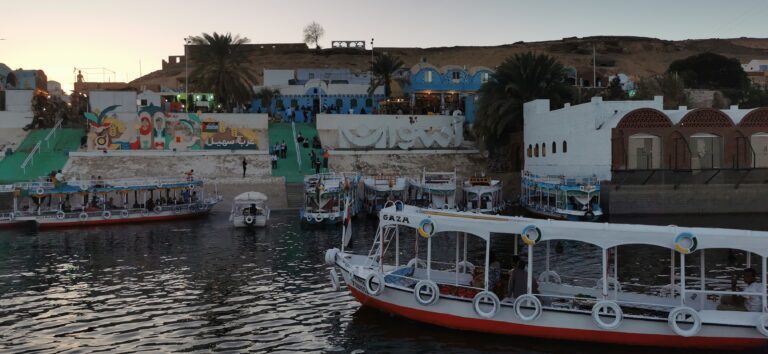Egypt, often referred to as the cradle of civilization, is one of the most populous countries in both Africa and the Middle East, with a population exceeding 100 million people. Its strategic location, bridging northeastern Africa and southwestern Asia via the Sinai Peninsula, positions it as a vital hub of culture, commerce, and tourism. The country’s economy is diverse, with key sectors including agriculture, industry, and services contributing to its GDP. However, one of the most notable contributors to the economy is tourism, which has long been a cornerstone of Egypt’s economic and cultural identity.
Overview of Tourism in Egypt
Tourism in Egypt is deeply rooted in the country’s rich historical and cultural heritage. Home to iconic landmarks such as the Great Pyramids of Giza, the Sphinx, the Valley of the Kings, and the temples of Luxor and Karnak, Egypt offers an unparalleled journey into ancient history. Additionally, Islamic Cairo, the Mediterranean charm of Alexandria, and the serene beauty of the Nile River cruises further diversify its appeal.
Beyond its historical sites, Egypt also attracts adventure seekers and relaxation enthusiasts. The Red Sea Riviera, including cities like Hurghada, Sharm El-Sheikh, and Marsa Alam, is famous for its crystal-clear waters, vibrant marine life, and stunning coral reefs. These destinations are particularly popular for diving, snorkeling, and other aquatic sports, making Egypt a favorite among tourists seeking a mix of adventure and leisure.
Visitor Demographics and Trends
Egypt attracts millions of visitors annually, with numbers typically exceeding 10 million tourists in recent years. For example, in 2019, the country welcomed approximately 13.1 million international visitors, generating an estimated $13 billion in revenue. In 2021, as the global tourism sector began recovering from the COVID-19 pandemic, Egypt saw over 8 million tourists, and projections for 2023 show further growth.
The majority of visitors come from Europe, with Germany, the United Kingdom, and Russia being the leading source countries. German tourists alone accounted for over 2 million visits annually in pre-pandemic years. Other significant contributors include travelers from Italy, France, and Eastern European countries such as Ukraine and Poland. Visitors from Asia, North America, and the Middle East also constitute a significant portion of the market. Cultural heritage and archaeological tourism are the primary motivations for many visitors, while others are drawn by the coastal resorts and recreational opportunities along the Red Sea.
Hurghada: A Premier Red Sea Destination
Hurghada, situated on the eastern coast of Egypt along the Red Sea, is one of the country’s most captivating tourist destinations. With a resident population of approximately 250,000, Hurghada is a dynamic city that experiences a significant influx of tourists throughout the year.
Attractions and Activities
Hurghada’s main allure lies in its natural beauty and the abundance of activities it offers. The city is renowned for its:
- Marine Adventures: The Red Sea’s coral reefs are among the most beautiful and biodiverse in the world, attracting divers and snorkelers from across the globe.
- Water Sports: Activities such as windsurfing, kitesurfing, and sailing are popular due to favorable wind conditions and clear waters.
- Desert Excursions: Beyond the coastline, tourists can explore the Eastern Desert through jeep safaris, quad biking, and camel rides.
- Island Tours: Nearby islands such as Giftun Island are ideal for day trips, offering pristine beaches and excellent opportunities for snorkeling and relaxation.
Visitor Numbers
Hurghada is one of the most visited cities in Egypt, with annual tourist numbers reaching over 3 million in recent years. It is especially popular among European tourists, with Germans and Russians representing the largest share. Seasonal peaks during the summer months and holiday seasons see the city’s population swell significantly due to international arrivals.
Hospitality and Infrastructure
Hurghada’s tourism infrastructure is well-developed, featuring a range of accommodations from luxury resorts to budget-friendly hotels. The city’s international airport provides convenient access for international visitors, with over 8 million passengers processed annually. Its vibrant nightlife, dining options, and shopping centers cater to diverse tastes, further enhancing its appeal.
Economic Impact
Tourism is a vital sector for Hurghada, providing employment opportunities and supporting local businesses. The city’s popularity has also spurred investments in infrastructure, including modern hotels, marinas, and entertainment facilities. The direct and indirect benefits of tourism significantly contribute to the city’s and Egypt’s overall economy.
Challenges and Opportunities
While Egypt’s tourism sector has seen considerable success, it also faces challenges such as political instability, environmental concerns, and competition from other global destinations. However, ongoing efforts to promote sustainable tourism, improve infrastructure, and enhance safety measures present opportunities for growth. The country’s commitment to preserving its natural and cultural assets ensures its continued appeal to global travelers.
Conclusion
Egypt remains a premier destination for tourists seeking a blend of history, culture, and adventure. Cities like Hurghada exemplify the country’s ability to offer world-class experiences, from exploring ancient wonders to enjoying modern recreational activities. With its unique offerings and continued investments in the tourism sector, Egypt is poised to strengthen its position as one of the world’s top travel destinations.









